
Interview with architect Aaron Stavert from NEXT Network
- Subject:
- Career and Technical Education
- Technology and Engineering
- Material Type:
- Other
- Author:
- NEXT network
- Date Added:
- 06/29/2022

Interview with architect Aaron Stavert from NEXT Network
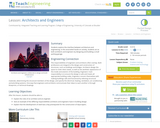
Students explore the interface between architecture and engineering. In the associated hands-on activity, students act as both architects and engineers by designing and building a small parking garage.

Check out these links to various Architecture & Construction resources that you can use as part of your classroom curriculum today.

Use the attached resources to research careers associated with this career cluster.
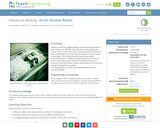
Students create four-legged walking robots and measure how far they travel across different types of surfaces. They design and create "shoes" to add to the robots' feet and observe the effect of their modifications on the net distance traveled across the various surface types. This activity illustrates how the specialized locomotive features of different species help them to survive or thrive in their habitat environments. The activity is best as an enrichment tool that follows a lesson that introduces the concept of biological adaptation to students.

This is an activity about comparing images of the Sun in different wavelengths of light. Learners will examine solar images taken by the SOHO spacecraft to look for differences in the features that are visible in the various wavelengths of light. This activity requires access to the internet to view or print images of the Sun. This is Activity 7 of the Sun As a Star afterschool curriculum.
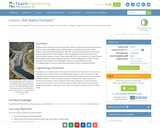
Students learn that dams do not last forever. Similar to other human-made structures, such as roads and bridges, dams require regular maintenance and have a finite lifespan. Many dams built during the 1930-70s, an era of intensive dam construction, have an expected life of 50-100 years. Due to inadequate maintenance and/or for environmental reasons, some of these dams will fail or be removed in the next 50 years. The engineers with Splash Engineering have an ethical obligation to remind Thirsty County of the maintenance and lifespan concerns associated with its dam.
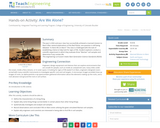
The year is 2032 and your class has successfully achieved a manned mission to Mars! After several explorations of the Red Planet, one question is still being debated: "Is there life on Mars?" The class is challenged with the task of establishing criteria to help look for signs of life. Student explorers conduct a scientific experiment in which they evaluate three "Martian" soil samples and determine if any contain life.
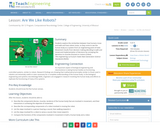
This lesson explores the similarities between how a human being moves/walks and how a robot moves. This allows students to see the human body as a system, i.e., from the perspective of an engineer. It shows how movement results from (i) decision making, i.e., deciding to walk and move, and (ii) implementing the decision by conveying the decision to the muscle (human) or motor (robot).
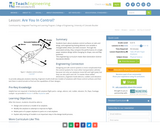
This lesson teaches the engineering method for testing wherein one variable is changed while the others are held constant. Students compare the performance of a single paper airplane design while changing the shape, size and position of flaps on the airplane. Students also learn about control surfaces on the tail and wings of an airplane.
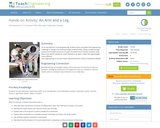
As an introduction to bioengineering, student teams are given the engineering challenge to design and build prototype artificial limbs using a simple syringe system and limited resources. As part of a NASA lunar mission scenario, they determine which substance, water (liquid) or air (gas), makes the appendages more efficient.
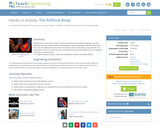
Students learn more about how muscles work and how biomedical engineers can help keep the muscular system healthy. Following the engineering design process, they create their own biomedical device to aid in the recovery of a strained bicep. They discover the importance of rest to muscle recovery and that muscles (just like engineers!) work together to achieve a common goal.

Students are presented with a hypothetical scenario in which they are biomedical engineers asked to design artificial hearts. Using the engineering design process as a guide, the challenge is established and students brainstorm to list everything they might need to know about the heart in order to create a complete mechanical replacement (size, how it functions, path of blood etc.). They conduct research to learn the information and organize it through various activities. They research artificial heart models that have already been used and rate their performance in clinical trials. Finally, they analyze the data to identify the artificial heart features and properties they think work best and document their findings in essay form.

MKE Tech's Pre-Internship students are discussing Artificial Intelligence. The following videos will give you a look into the variety of tech jobs and careers available to you and how you can prepare for them. Watch one - or all - and hear from experts who are doing these jobs today. As you watch the videos, download our workbook at https://bit.ly/MKEWorksheet to help you reflect on each career path and if that might be the right one for you someday!
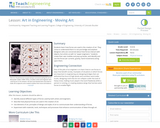
Students learn how forces are used in the creation of art. They come to understand that it is not just bridge and airplane designers who are concerned about how forces interact with objects, but artists as well. As "paper engineers," students create their own mobiles and pop-up books, and identify and use the forces (air currents, gravity, hand movement) acting upon them.

The purpose of this learning video is to show students how to think more freely about math and science problems. Sometimes getting an approximate answer in a much shorter period of time is well worth the time saved. This video explores techniques for making quick, back-of-the-envelope approximations that are not only surprisingly accurate, but are also illuminating for building intuition in understanding science. This video touches upon 10th-grade level Algebra I and first-year high school physics, but the concepts covered (velocity, distance, mass, etc) are basic enough that science-oriented younger students would understand. If desired, teachers may bring in pendula of various lengths, weights to hang, and a stopwatch to measure period. Examples of in- class exercises for between the video segments include: asking students to estimate 29 x 31 without a calculator or paper and pencil; and asking students how close they can get to a black hole without getting sucked in.
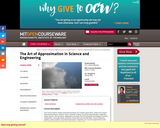
This course teaches simple reasoning techniques for complex phenomena: divide and conquer, dimensional analysis, extreme cases, continuity, scaling, successive approximation, balancing, cheap calculus, and symmetry. Applications are drawn from the physical and biological sciences, mathematics, and engineering. Examples include bird and machine flight, neuron biophysics, weather, prime numbers, and animal locomotion. Emphasis is on low-cost experiments to test ideas and on fostering curiosity about phenomena in the world.
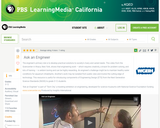
Explore some of the wonders of modern engineering in this video from the Sciencenter in Ithaca, New York. Hear a diverse selection of engineers explain how things work.
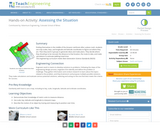
Finding themselves in the middle of the Amazon rainforest after a plane crash, students use map scales, keys, and longitude and latitude coordinates to figure out where they are. Then they work in groups to generate ideas and make plans. They decide where they should go to be rescued, the distance to that location, the route to take, and make calculations to estimate walking travel time.
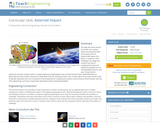
Through this earth science curricular unit, student teams are presented with the scenario that an asteroid will impact the Earth. In response, their challenge is to design the location and size of underground caverns to shelter the people from an uninhabitable Earth for one year. Driven by this adventure scenario, student teams 1) explore general and geological maps of their fictional state called Alabraska, 2) determine the area of their classroom to help determine the necessary cavern size, 3) learn about map scales, 4) test rocks, 5) identify important and not-so-important rock properties for underground caverns, and 6) choose a final location and size.